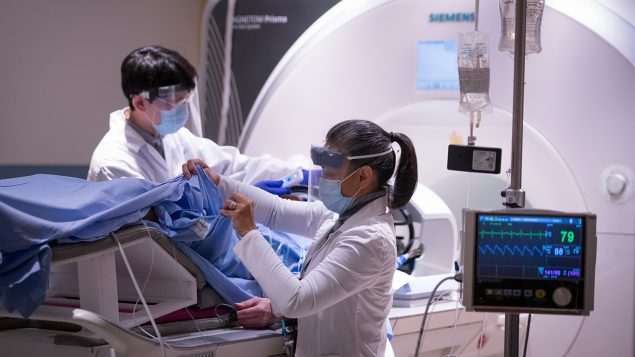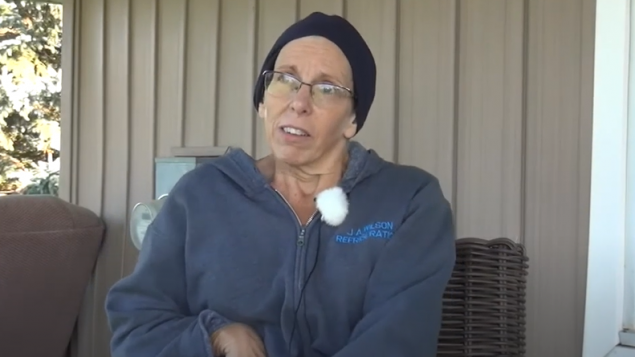In a world first, Toronto researchers are testing the use of ultrasound technology to deliver an enzyme directly into the brain to help patients with Parkinson’s disease. The technique uses no scalpels and no cutting.
Parkinson’s affects one in every 500 people in Canada for an estimated total of over 100,000 people. Six million people are affected around the world.
A devastating brain disorder
The disease is a brain disorder that causes tremor, rigidity, slow movement and several other disabling symptoms. It is progressive and right now there is no cure.
Parkinson’s is caused by the buildup of a protein in an area of the brain which controls movement. Most people have an enzyme which helps clear the protein. Where people lack the enzyme, doctors seek to replace it but are stymied by the blood-brain barrier. This is a structure in the brain that prevents infection from getting into the brain, but also prevents access for helpful drugs or therapeutic substances.

A patient is prepared for the new procedure. (Kevin Van Paassen/Sunnybrook Health Sciences Centre)
A temporary opening of blood-brain barrier
Researchers from Sunnybrook Health Sciences Centre and University Health Network are testing a way to temporarily open the blood-brain barrier in areas implicated in Parkinson’s disease and to deliver the therapeutic enzyme. To do this they use low-intensity ultrasound waves that interact with tiny microscopic bubbles which vibrate rapidly, causing a temporary opening in the blood-brain barrier. After the delivery of the enzyme replacement, the barrier closes within hours.
If proven to be safe, this technique could be used to deliver to the brain other substances such as chemotherapy drugs to fight cancer.

“I hope that by taking part in this clinical trial I can help make a difference,” says Pat Wilson. (from video by Sunnybrook Health Sciences Centre)
Hopes of making a difference
Pat Wilson is the first person in the world to take part in the clinical trial.
“My father had Parkinson’s and I saw the difficulties he faced,” said Wilson. “I am living with the challenges of this condition…My kids could get it…Future people could get it. If there’s some way to treat it easier and more efficiently I’m willing to try and get that done…I hope that by taking part in this clinical trial I can help make a difference.”
Video from Sunnybrook Health Sciences Centre







For reasons beyond our control, and for an undetermined period of time, our comment section is now closed. However, our social networks remain open to your contributions.